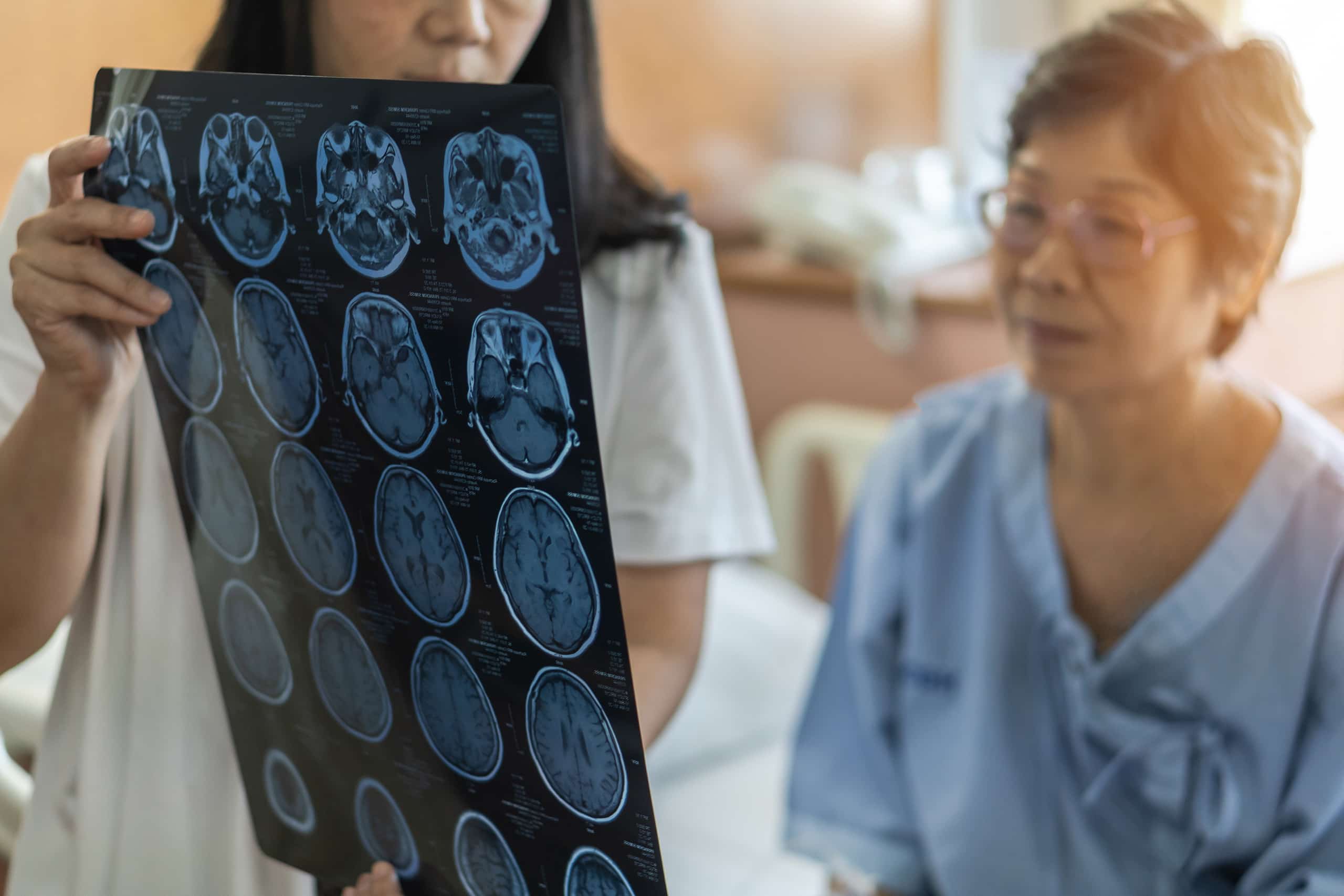Kanye West’s bipolar story and brain mapping
Bipolar disorder has been part of the public conversation for years, but few stories have sparked as much discussion as Kanye West’s.
His openness about his mental health diagnosis has put a spotlight on the challenges of mood disorders and the need for more individualized, neuroscience-based approaches to care.
At Neurotherapeutix in New York City, our team uses patented fMRI-based computational brain mapping to better understand the neural patterns behind bipolar disorder and create individualized treatment plans.
To learn how brain-based technologies may support mood stabilization, contact our team or continue reading below.
Why Kanye West’s bipolar diagnosis matters today
Kanye West’s diagnosis has played a major role in increasing awareness of bipolar disorder. His public experiences, ranging from creative highs to moments of emotional overwhelm, help people understand that bipolar disorder is complex, unpredictable and deeply rooted in how the brain regulates mood.
Public impact of his mental health journey
West’s transparency has encouraged more people to talk openly about their own mental health challenges. It has also shown how untreated or under-treated symptoms can affect relationships, decision-making, work and daily life.
His story highlights the importance of timely support and access to personalized, neuroscience-based care.
What his story reveals about mood disorders
Mood disorders do not follow a simple pattern. Some individuals experience long periods of stability, while others cycle quickly between highs and lows.
West’s journey reflects how mood, impulse control and emotional regulation can shift unexpectedly, often driven by underlying changes in brain activity and connectivity.
According to the National Institute of Mental Health, about 2.8 percent of U.S. adults experience bipolar disorder each year, making it one of the most common mood disorders that impacts both emotional and cognitive function.
Understanding bipolar disorder and brain function
Bipolar disorder is categorized as a mood disorder characterized by episodes of depression, mania or hypomania. Behind these symptoms are specific brain circuits that influence emotional regulation, energy levels, sleep, motivation and judgment.
How bipolar disorder affects mood-regulating circuits
Research shows that bipolar disorder involves changes in communication across the prefrontal cortex, amygdala and limbic system—areas responsible for decision-making, emotional responses and stress processing. When these circuits become dysregulated, mood states can shift rapidly or intensely.
Mood disorder brain patterns explained
Imaging studies have identified patterns of overactivity in regions associated with emotional reactivity and underactivity in areas linked to cognitive control. These patterns vary widely between individuals, which is why bipolar disorder looks different for each person and why personalized assessment is so important.
What is brain mapping and how does it work?
Brain mapping is an emerging tool that uses advanced imaging to study how different parts of the brain communicate.
At Neurotherapeutix, computational brain mapping is used exclusively as a part of our fMRI-based analysis to measure functional connectivity with millimeter-level precision. It is not a standalone treatment.
How brain imaging identifies functional abnormalities
Functional MRI tracks changes in blood flow that reflect neural activity. By analyzing these patterns, clinicians can identify circuits involved in mood regulation, stress response and cognitive processing. This helps reveal why specific symptoms appear or why certain treatments may not be effective.
Technology used in brain mapping therapy
Computational brain mapping uses detailed algorithms to interpret fMRI data, creating a personalized view of how a patient’s neural networks function. This goes beyond surface-level imaging to uncover connectivity issues that may contribute to mood instability.
Brain mapping vs. traditional psychiatric evaluation
Traditional evaluations rely on symptom descriptions, history and behavioral observations. Brain mapping adds an objective layer of information, providing neural data that can help clinicians understand the biological components of bipolar disorder and tailor treatment more precisely.
Brain mapping for bipolar disorder
Brain mapping is increasingly explored as a tool to improve diagnostic clarity and inform targeted interventions for bipolar disorder.
Why personalized brain data matters for treatment
Because bipolar disorder varies widely, having precise neural information helps clinicians guide treatment more effectively. Personalized data can highlight which circuits are overactive, underactive or misaligned, offering insight into what approaches may best support mood stabilization and strengthen neural connections.
At Neurotherapeutix, computational brain mapping is used to identify mood-related connectivity patterns that may not appear on standard imaging. This detailed view helps our team understand the unique functional changes contributing to each patient’s symptoms.
Neuroplasticity and brain-based stabilization
One of the key goals of brain-based treatment is to support neuroplasticity—the brain’s ability to adapt and strengthen healthier communication between circuits.
By identifying specific areas involved in mood regulation, clinicians can use targeted treatments to support long-term stability.
Personalized treatment options based on brain mapping
Brain mapping can guide a range of customized treatment approaches, offering insight into what is most effective for each individual.
Tailoring medication and therapy to brain activity patterns
Brain data may help clinicians better understand how a patient responds to medication or why certain symptoms persist. This supports more informed decision-making and reduces trial-and-error approaches.
Neurofeedback for bipolar disorder
Some individuals benefit from neurofeedback, a technique that trains the brain to regulate activity more effectively. By providing real-time information about neural patterns, neurofeedback may help patients develop greater control over stress responses and emotional regulation.
Brain-based approaches for mood stabilization
In some cases, targeted neuromodulation, such as fMRI-guided TMS therapy, can be used to stimulate specific circuits involved in mood regulation. This noninvasive approach is tailored using computational brain mapping data.
How Kanye West’s story reflects new mental health approaches
Kanye West’s public journey illustrates both the challenges of bipolar disorder and the importance of exploring innovative treatment modalities.
Why traditional bipolar treatments fall short for some patients
Standard medications and therapy are effective for many people, but not all individuals respond fully. This can happen when symptoms stem from neural circuits that are not being adequately addressed by conventional treatment alone.
How neuroscience-based models offer more precision
Neuroscience-based models look at the root causes of mood shifts by studying specific brain connections. Instead of general treatment paths, these models offer personalized approaches that reflect each person’s neural patterns.
When to consider brain mapping for bipolar disorder
Brain mapping may be helpful for individuals who:
- • Have persistent symptoms despite treatment
- • Experience rapid-cycling episodes
- • Want a clearer understanding of their brain’s role in mood changes
- • Are exploring individualized or advanced interventions
- • Want to complement traditional care with neuroscience-based approaches
Mapping provides a deeper look at functional connectivity and can guide next steps in care.
Effective and personalized brain mapping therapy in NYC
Located on Manhattan’s Upper East Side, Neurotherapeutix provides advanced, noninvasive computational brain mapping and neuroscience-driven treatments for individuals navigating bipolar disorder.
Our approach combines patented fMRI technology with compassionate, expert-led care to support mood stability and long-term well-being.
If you or a loved one is exploring personalized options for bipolar disorder treatment, contact our team to learn how computational brain mapping may support your goals.
Frequently asked questions
Artists, athletes and individuals across all backgrounds often want to understand how brain-based tools fit into bipolar disorder care. Here are answers to commonly asked questions.
Does brain mapping replace medication for bipolar disorder?
No. Brain mapping does not replace medication, but it may provide additional insight into how the brain functions, helping clinicians tailor care more effectively.
How accurate is brain mapping for mood disorder diagnosis?
Computational brain mapping offers functional insights but is not a standalone diagnostic tool. It complements clinical evaluation by revealing connectivity patterns involved in mood regulation.
Can brain mapping show why medications are not working?
In some cases, mapping can highlight neural circuits that remain dysregulated despite treatment, helping clinicians adjust care with more precision.
Is brain mapping helpful for people with rapid-cycling bipolar disorder?
Mapping may help identify fast-shifting connectivity patterns that contribute to rapid mood changes, offering a clearer picture of the underlying neural activity.
How long does it take to see results from brain-based therapy?
Timelines vary. Some individuals begin noticing changes after several weeks of targeted treatment, while others may need a longer course based on their symptoms and brain data.





















